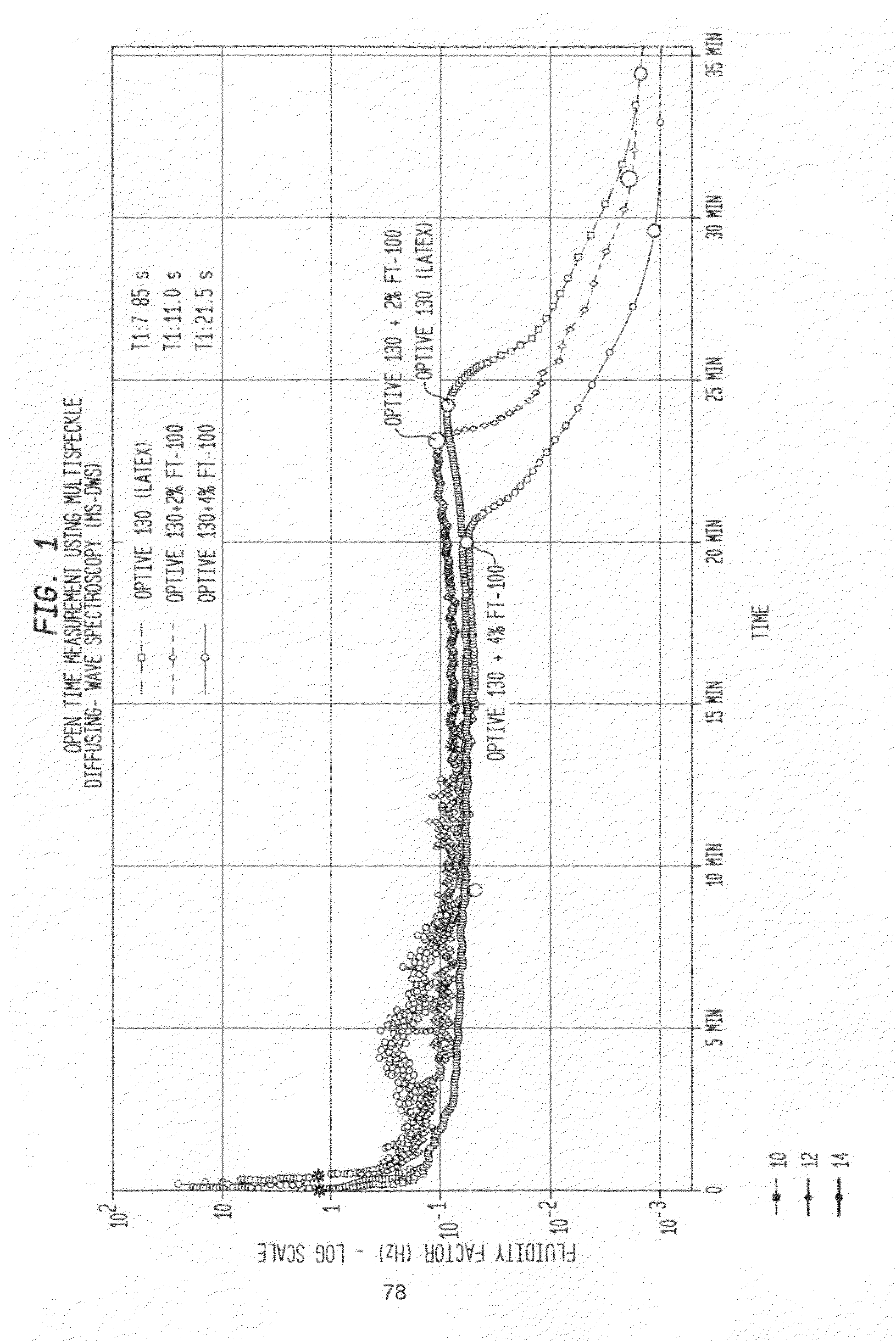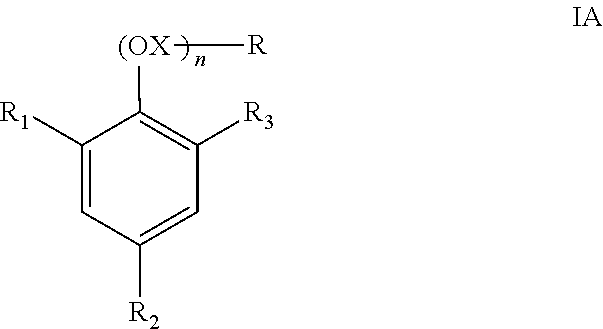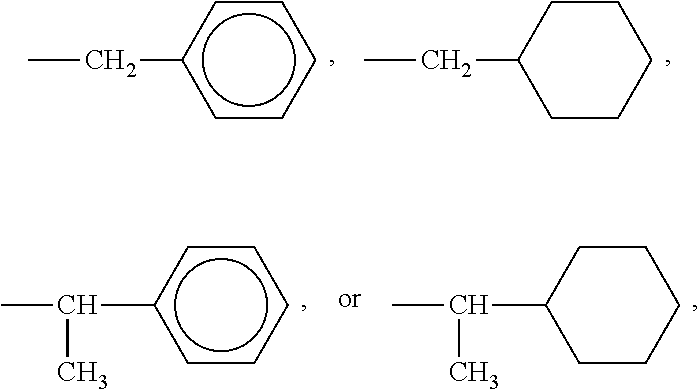Methods and systems for improving open time and drying time of latex binders and aqueous coatings
a technology of aqueous coatings and open time, applied in the field of methods and systems for improving the open time and drying time of latex binders and aqueous coatings, can solve the problems of low or zero voc paints & coatings, and reduced or limited open time or wet edge time, etc., to achieve the effect of improving the open time characteristics
- Summary
- Abstract
- Description
- Claims
- Application Information
AI Technical Summary
Benefits of technology
Problems solved by technology
Method used
Image
Examples
examples
[0179]The following Examples describe the present invention as surface active alkoxylated compounds utilized as one or more open time additives, including a blend of open time additives, to an aqueous dispersion of latex polymer or copolymer.
examples 1-2
[0180]Tables 1 and 2 illustrate the effects of TSP Ethoxylate nonionic surfactants on open time of Low VOC Paints and the Effects of TSP Ethoxylate anionic surfactants on open time of Low VOC Paints, respectively. Open time is generally understood to be the interval, after the paint is applied, during which it can be blended with additional painted regions. Open time refers to the amount of time a newly-applied layer of paint remains workable before brush strokes and other signs of manipulation become visible in dried films. The method for measuring Open Time is generally as follows: a 10 mils film is drawn down on a piece of black scrub test paper. The paint film is then cross-hatched in two-inch intervals with the eraser end of a pencil. The first cross hatch then brushed over in one direction 15 times; this is then repeated in two-minute intervals for each successive cross-hatch. After 24 hrs, the dry films are examined for the earliest times at which traces of cross-hatch at dis...
example 3
[0182]In Example 3, the measuring of open time is similar to that used in Examples 1-2. A blend of an anionic TSP Ethoxylate surfactant and a non-ionic TSP Ethoxylate surfactant was post-added to commercial zero and low VOC paints. The open time was measured using ASTM standard method (WK 13360).
[0183]Tables 3 and 4 illustrate the effect of a blend of (i) one or more TSP Ethoxylate nonionic surfactants with (ii) one or more TSP Ethoxylate anionic surfactants, on open time of Zero VOC Paints and Low VOC Paints, respectively.
TABLE 3Effects of TSP Ethoxylate Surfactantson Open Time of Zero VOC Paints.White BaseBlend of(10.0 lbs / 100Open Time, minutesSurfactantsgals)ControlTrialTSP-EO270 + 2.784.014.0anionic / TSP -EO nonionic #1TSP-EO270 + 3.136.014.0anionic / TSP -EO nonionic #2TSP-EO270 + 3.136.014.0anionic / TSP -EO nonionic #3TSP-EO270 + 3.134.08.0anionic / TSP -EO nonionic #4TSP-EO270 + 3.574.08.0anionic / TSP -EO nonionic #5
[0184]As shown in Table 3, blends #1, #2, #3, #4 and #5 each show a...
PUM
| Property | Measurement | Unit |
|---|---|---|
| Tg | aaaaa | aaaaa |
| Tg | aaaaa | aaaaa |
| Tg | aaaaa | aaaaa |
Abstract
Description
Claims
Application Information
 Login to View More
Login to View More - R&D
- Intellectual Property
- Life Sciences
- Materials
- Tech Scout
- Unparalleled Data Quality
- Higher Quality Content
- 60% Fewer Hallucinations
Browse by: Latest US Patents, China's latest patents, Technical Efficacy Thesaurus, Application Domain, Technology Topic, Popular Technical Reports.
© 2025 PatSnap. All rights reserved.Legal|Privacy policy|Modern Slavery Act Transparency Statement|Sitemap|About US| Contact US: help@patsnap.com



